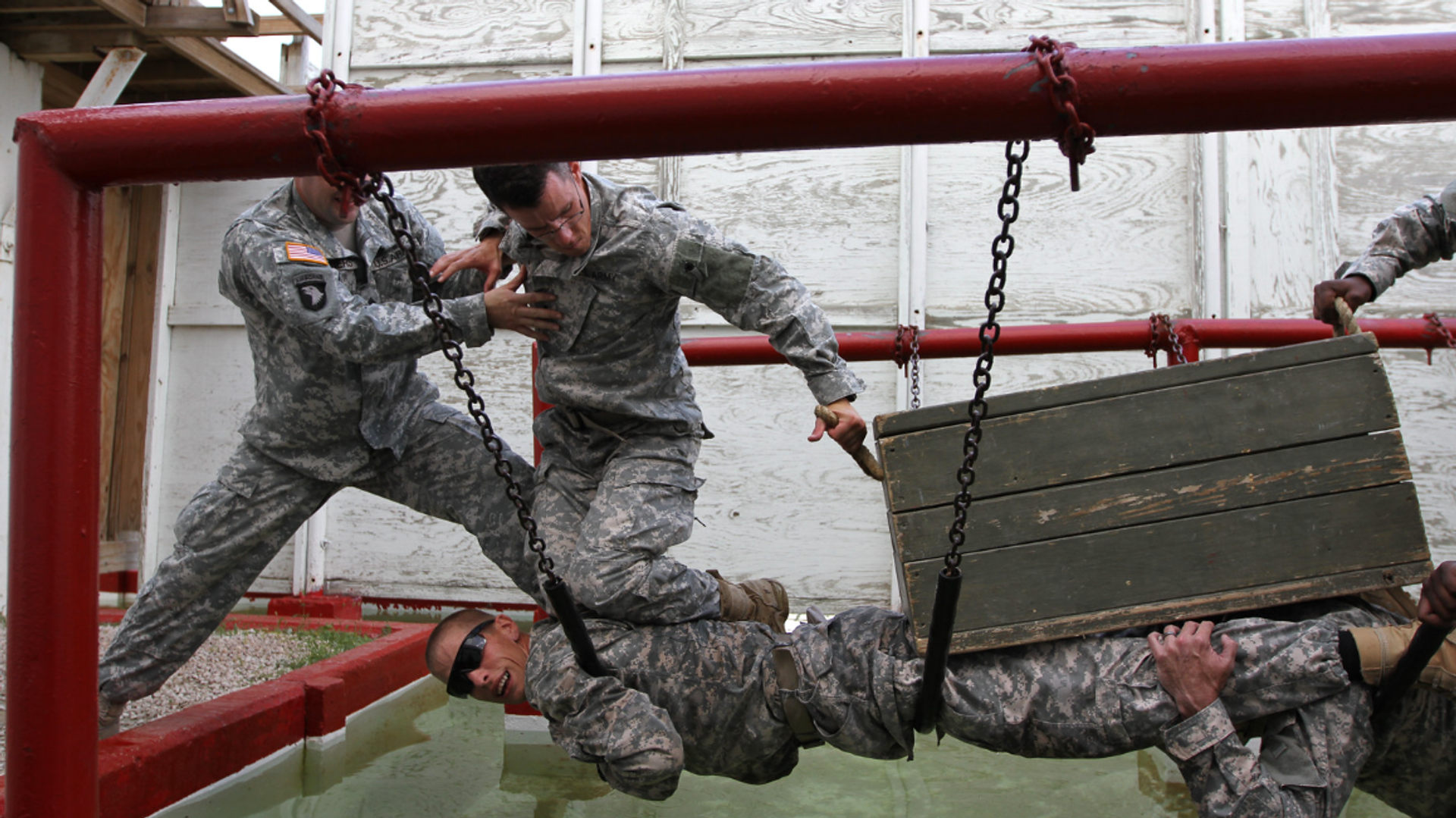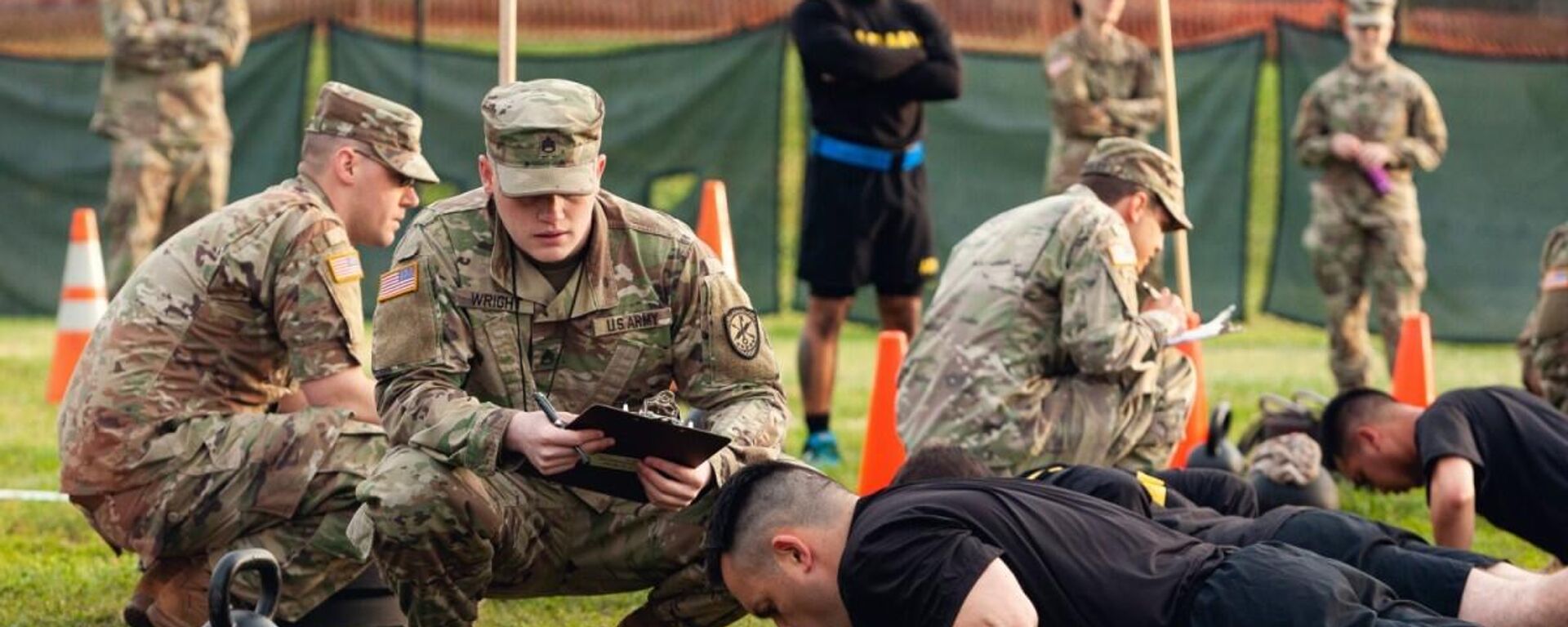https://sputnikglobe.com/20220626/us-army-drops-high-school-diploma-requirement-amid-severe-problems-with-recruitment-1096672258.html
US Army Drops High School Diploma Requirement Amid Severe Problems With Recruitment
US Army Drops High School Diploma Requirement Amid Severe Problems With Recruitment
Sputnik International
Since ending the selective service draft in the mid-1970s, the US military has depended on volunteers, many of them from lower income and migrant households... 26.06.2022, Sputnik International
2022-06-26T11:39+0000
2022-06-26T11:39+0000
2022-06-26T11:39+0000
america
army
recruitment
https://cdn1.img.sputnikglobe.com/img/07e6/06/1a/1096672111_0:22:1158:673_1920x0_80_0_0_fe987191ddb9c34e189329260e8ca7c3.png
The US Army is moving to end the requirement for grunts to have a high school diploma or General Educational Development (GED) certificate amid a recruitment drought facing it and other branches of the Department of Defense.The ASVAB is a multiple-choice test in science, math, word knowledge, comprehension and verbal expression, electronics, automotive and mechanical skills, and is administered by the military’s entrance processing command.Ordinarily, recruits with a high school degree or GED can serve as infantrymen and cavalry scouts with an ASVAB score of just 31 or above. The same goes for Navy seamen and Army National Guard troopers. The Marines’ passing score is a bit higher, with 32 points or more required, while the Air Force, Coast Guard and Air National Guard are considered the elite, with a passing score of 36, 40 and 50, respectively. The maximum ASVAB score is 99. Scores are broken down further by specialty within each branch.In a related development last week, the Army relaxed its tattoo policy, allowing recruits to sport ink on their hands, necks and behind the ears without filing lengthy waiver exceptions taking weeks to process. That policy change is the second time since 2015 that the Army has relaxed tattoo regulations, previously throwing out limits on the number of pieces of body art on a recruit’s limbs. Face, frontal neck tattoos are still a no-no under the new rules (with the exception of religious face tattoos), as are any designs which could be considered offensive, extremist or containing hateful words or images.The rule changes come amid a dramatic dwindling of applicants wishing to serve in the military, with the Army recently reporting reaching just 40 percent of its recruitment target for the year. The drop is said to be a force-wide issue attributed to fewer people seeking employment in the military for personal reasons, refusal to take mandatory Covid vaccines, plus remaining regulations preventing potential recruits with girth issues or criminal infractions such as drug use from serving.The US military’s overall active-duty size has decreased steadily in recent decades, with the regular Army projecting a strength of 485,900 in Congress’s fiscal year 2021 budget. Notwithstanding dropping numbers, the US military budget has grown dramatically after a brief dip in the 1990s thanks to the ‘War on Terror’ in the early 2000s, and the rise of great power competition with an emerging China and a resurgent Russia in the 2010s.Last week, the House of Representatives’ Armed Services Committee supported increasing US defense spending to $858 billion in fiscal year 2022-2023, $45 billion more than the Biden White House requested. The United States is by far the world’s biggest military spender, with Washington and its allies accounting for over half of the estimated $2.1 trillion spent by the world on defense in 2021, according to the Stockholm International Peace research Institute. Roughly one-quarter of the DoD’s budget is spent on military personnel.
https://sputnikglobe.com/20220625/army-relaxes-tattoo-policy-in-an-effort-to-increase-recruiting--1096646648.html
Sputnik International
feedback@sputniknews.com
+74956456601
MIA „Rosiya Segodnya“
2022
News
en_EN
Sputnik International
feedback@sputniknews.com
+74956456601
MIA „Rosiya Segodnya“
Sputnik International
feedback@sputniknews.com
+74956456601
MIA „Rosiya Segodnya“
america, army, recruitment
america, army, recruitment
US Army Drops High School Diploma Requirement Amid Severe Problems With Recruitment
Since ending the selective service draft in the mid-1970s, the US military has depended on volunteers, many of them from lower income and migrant households, to fill the ranks. Recruitment tactics have included aggressive targeting of high school students, lucrative cash signup bonuses and financial support for higher education.
The US Army is moving to end the requirement for grunts to have a high school diploma or General Educational Development (GED) certificate amid a recruitment drought facing it and other branches of the Department of Defense.
In a
statement Thursday, the Army announced that beginning in October, applicants can be accepted if they meet the criteria of being 18 years old or above, and scoring 50 or above on the Armed Services Vocational Aptitude Battery (ASVAB).
The ASVAB is a multiple-choice test in science, math, word knowledge, comprehension and verbal expression, electronics, automotive and mechanical skills, and is administered by the military’s entrance processing command.
Ordinarily, recruits with a high school degree or GED can serve as infantrymen and cavalry scouts with an ASVAB score of just 31 or above. The same goes for Navy seamen and Army National Guard troopers. The Marines’ passing score is a bit higher, with 32 points or more required, while the Air Force, Coast Guard and Air National Guard are considered the elite, with a passing score of 36, 40 and 50, respectively. The maximum ASVAB score is 99. Scores are broken down further by specialty within each branch.
In a related development last week, the Army relaxed its tattoo policy, allowing recruits to sport ink on their hands, necks and behind the ears without filing lengthy waiver exceptions taking weeks to process. That policy change is the second time since 2015 that the Army has relaxed tattoo regulations, previously throwing out limits on the number of pieces of body art on a recruit’s limbs. Face, frontal neck tattoos are still a no-no under the new rules (with the exception of religious face tattoos), as are any designs which could be considered offensive, extremist or containing hateful words or images.
The rule changes come amid a dramatic dwindling of applicants wishing to serve in the military, with the Army recently reporting reaching just 40 percent of its recruitment target for the year. The drop is said to be a force-wide issue attributed to fewer people seeking employment in the military for personal reasons,
refusal to take mandatory Covid vaccines, plus remaining regulations preventing potential recruits with girth issues or criminal infractions such as drug use from serving.
The US military’s overall active-duty size has decreased steadily in recent decades, with the regular Army projecting a strength of 485,900 in Congress’s fiscal year 2021 budget. Notwithstanding dropping numbers, the US military budget has grown dramatically after a brief dip in the 1990s thanks to the ‘War on Terror’ in the early 2000s, and the rise of great power competition with an emerging China and a resurgent Russia in the 2010s.
Last week, the House of Representatives’ Armed Services Committee supported increasing US defense spending to $858 billion in fiscal year 2022-2023, $45 billion more than the Biden White House requested. The United States is by far the world’s biggest military spender, with Washington and its allies accounting for over half of the estimated $2.1 trillion spent by the world on defense in 2021,
according to the Stockholm International Peace research Institute. Roughly one-quarter of the DoD’s budget is spent on military personnel.




